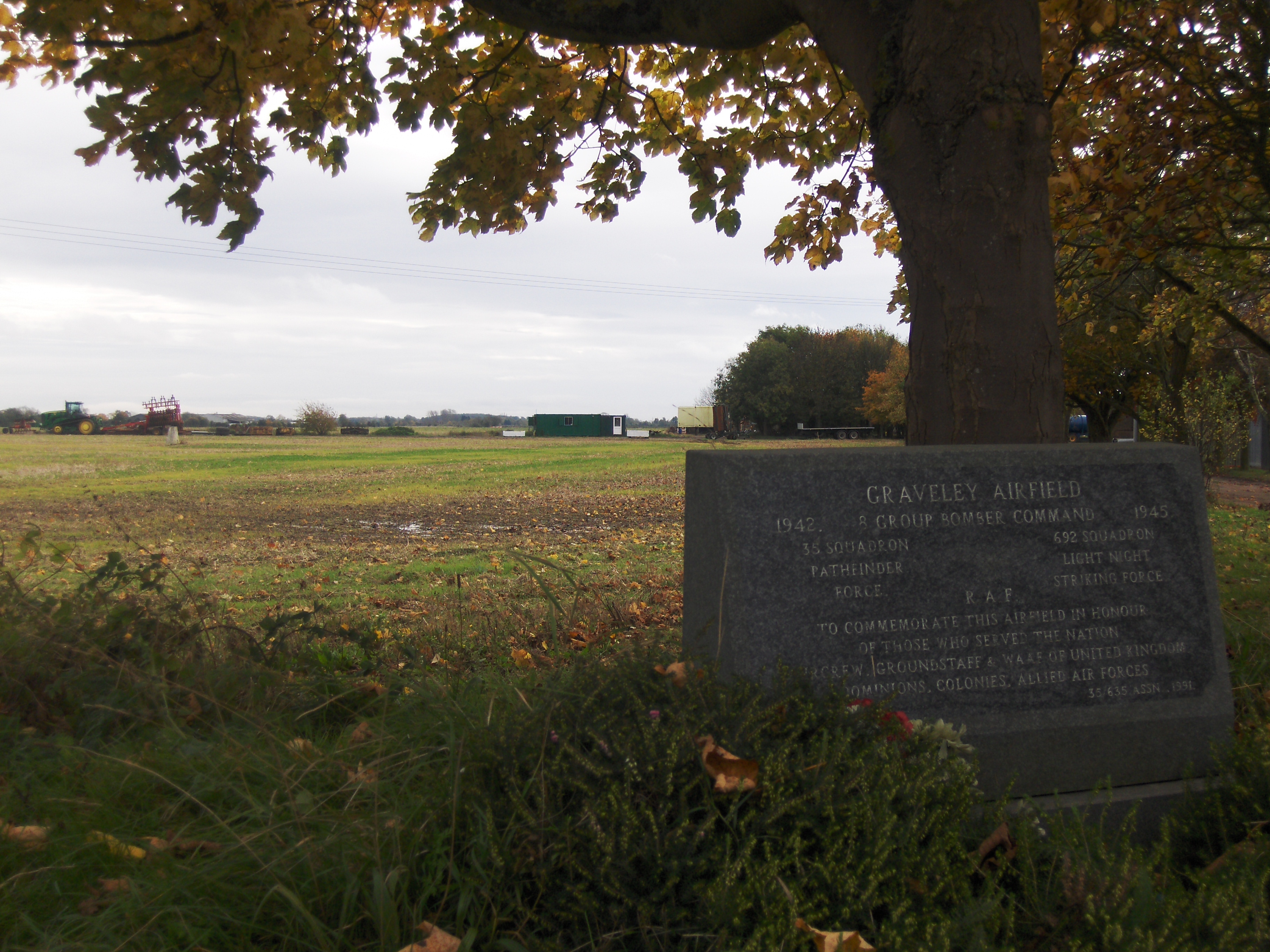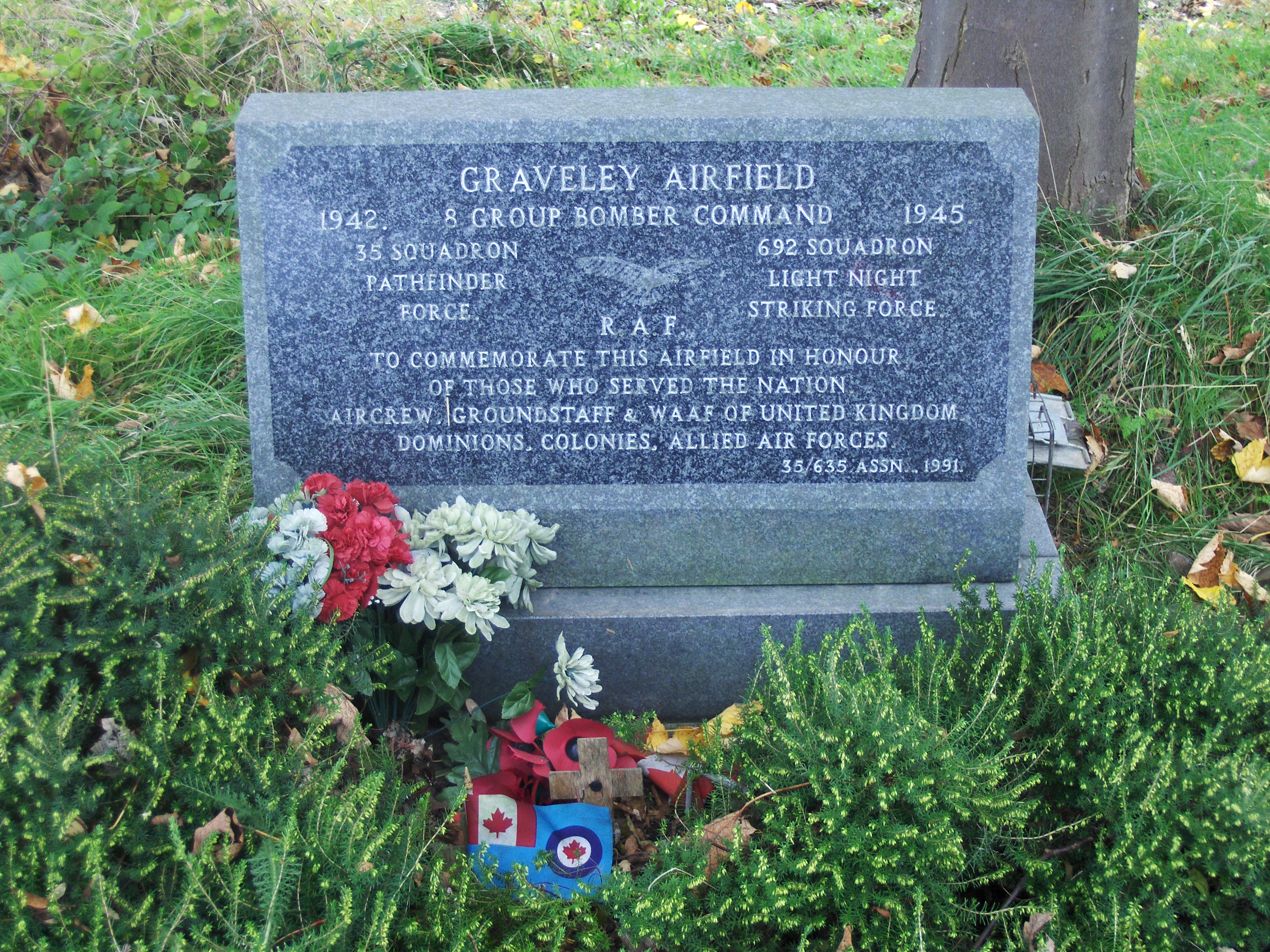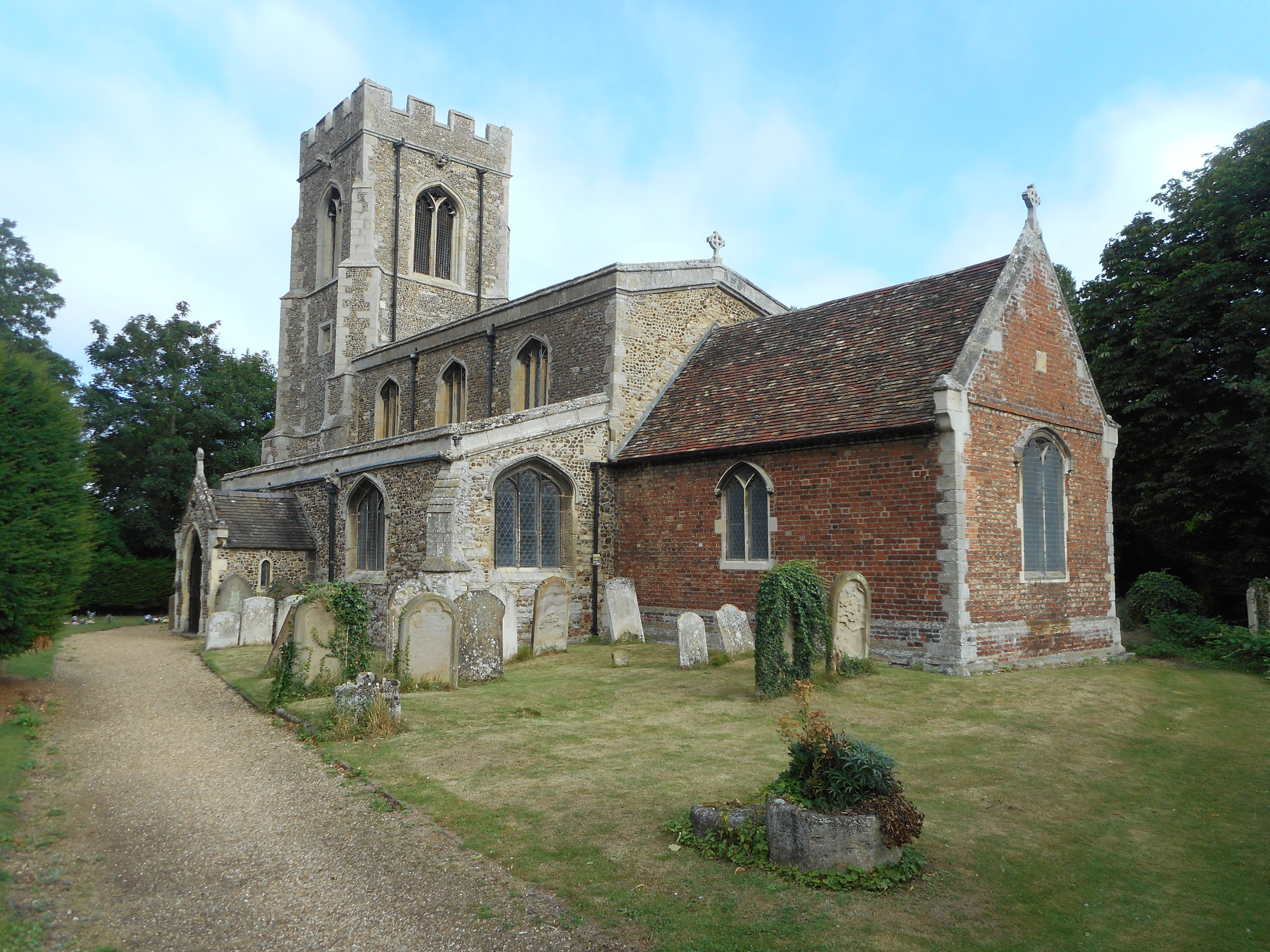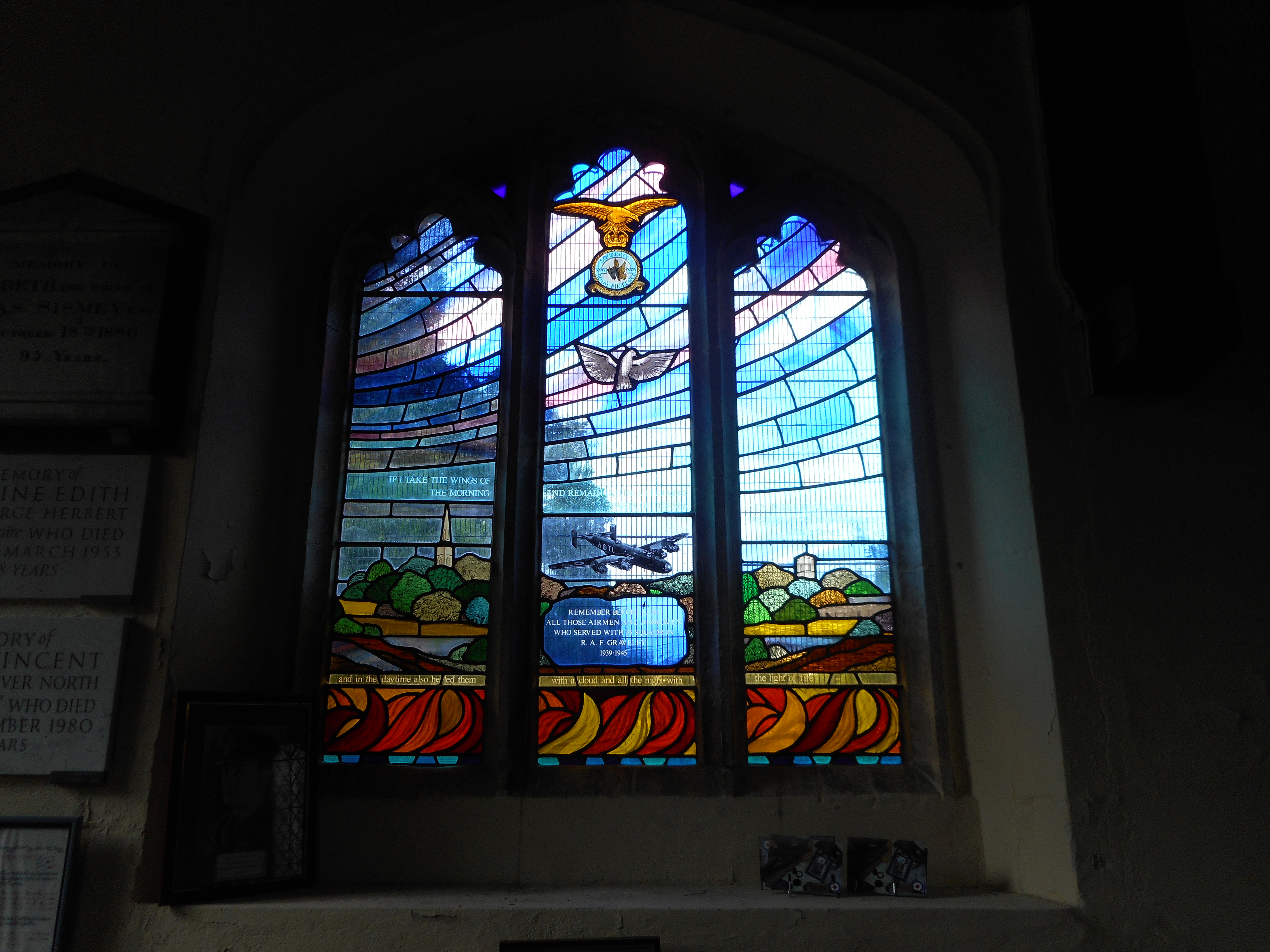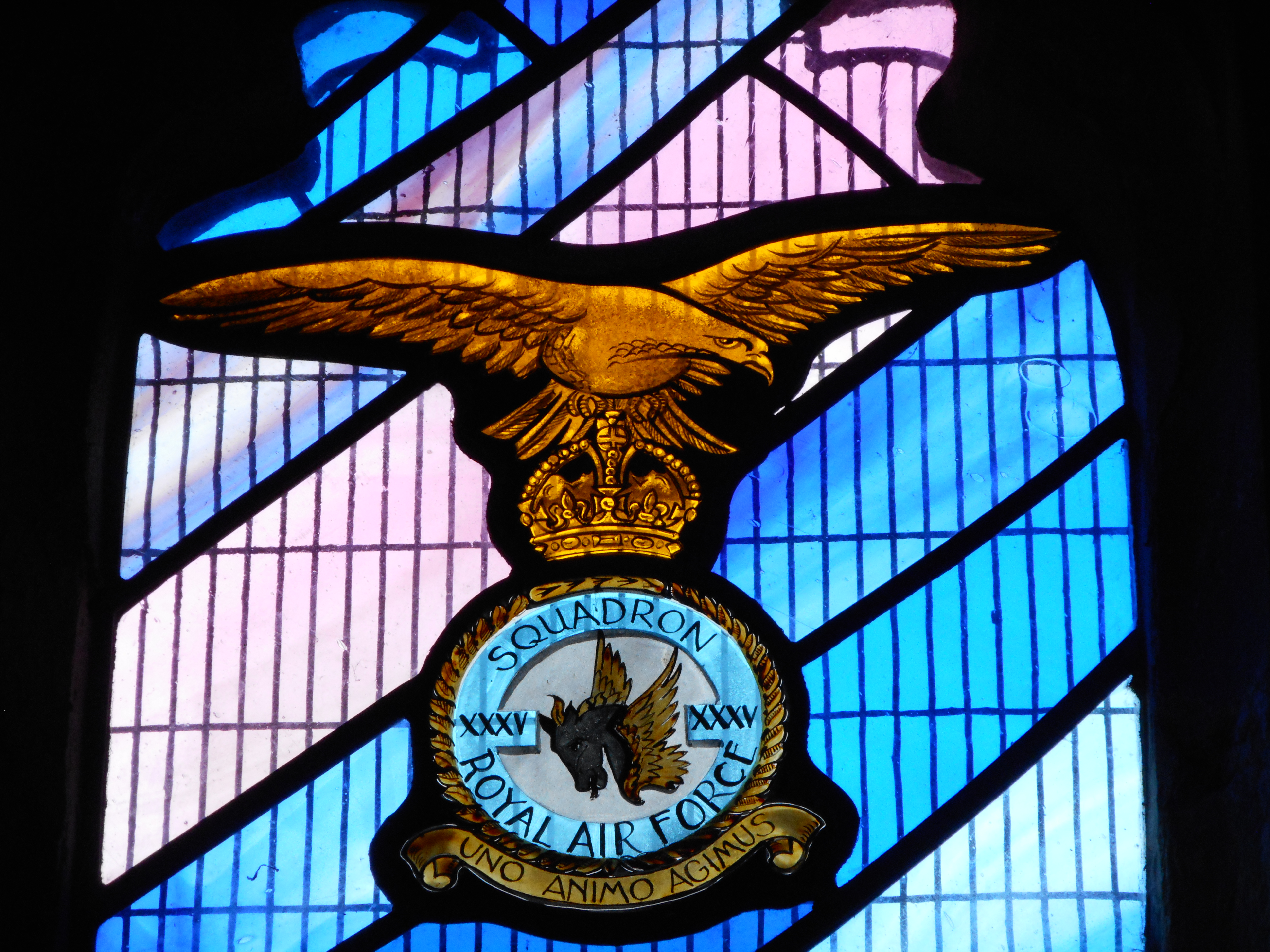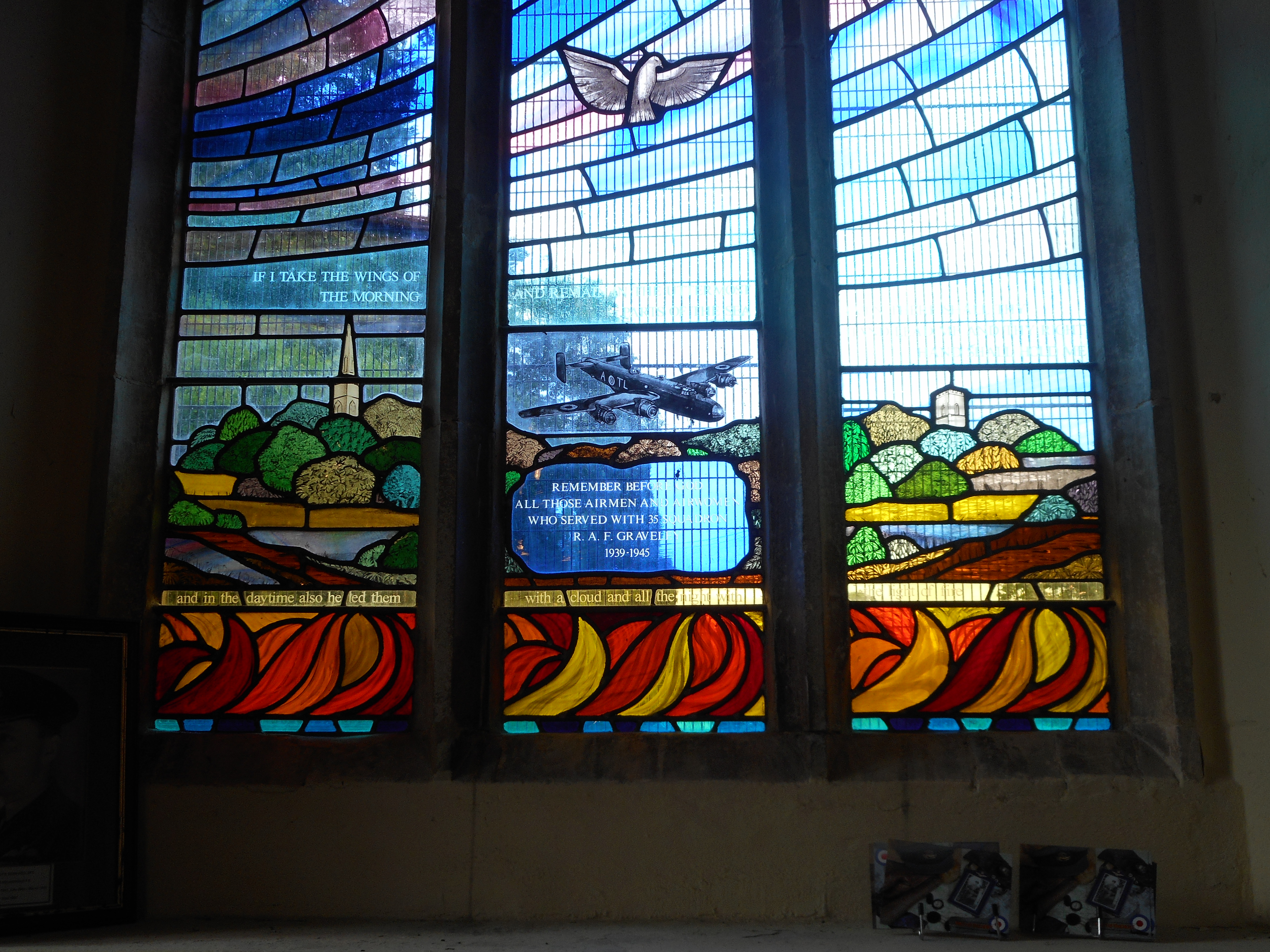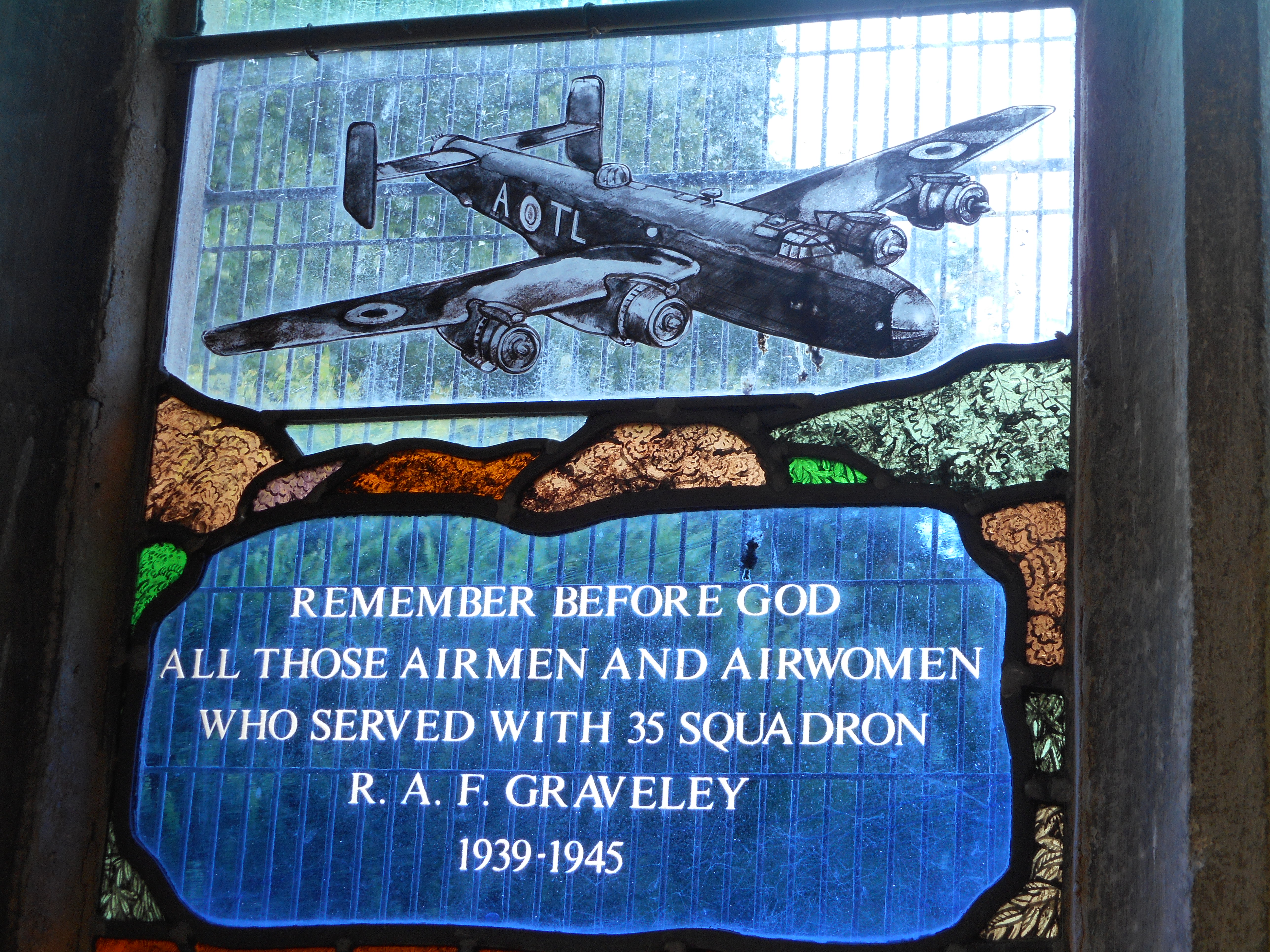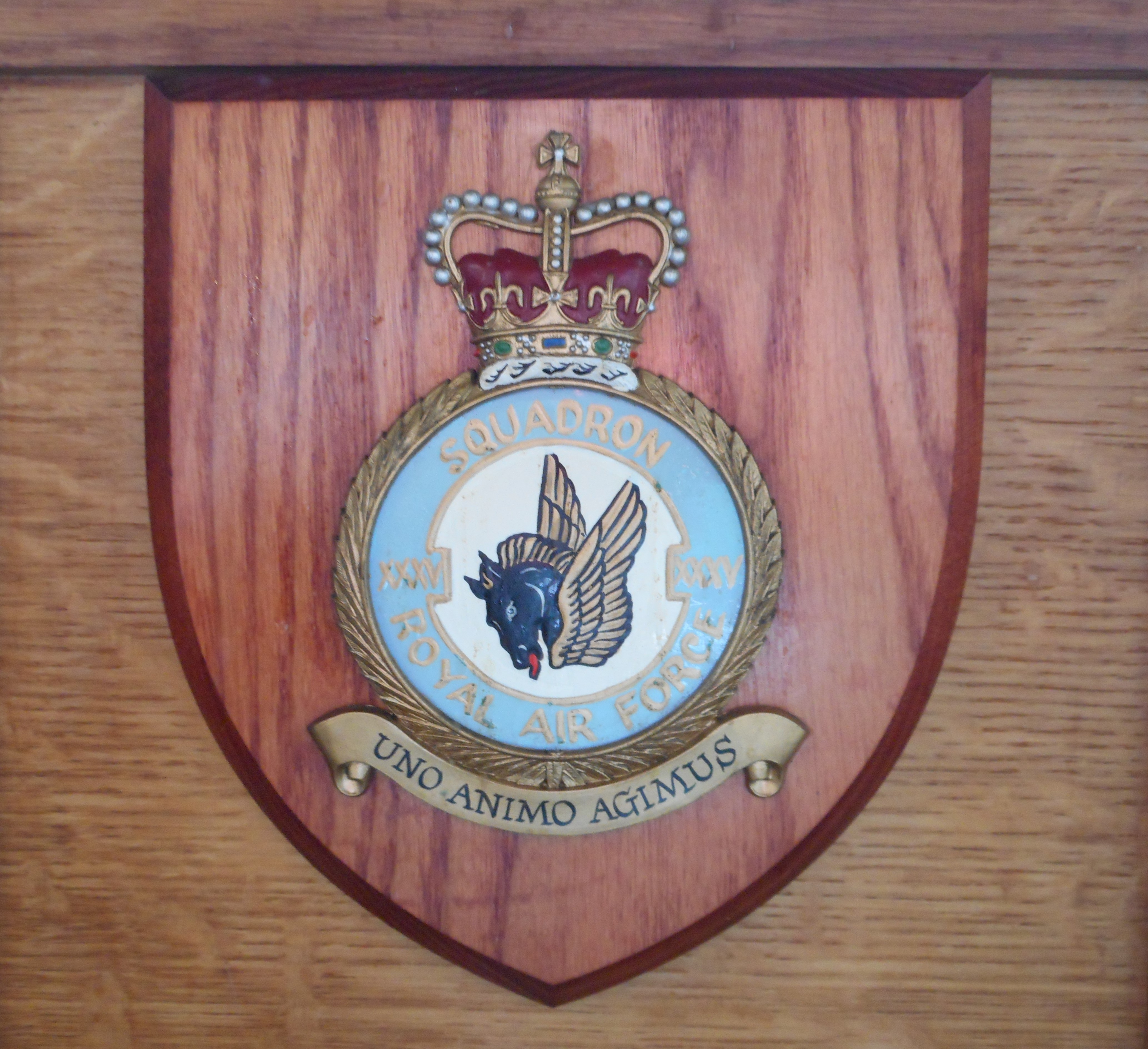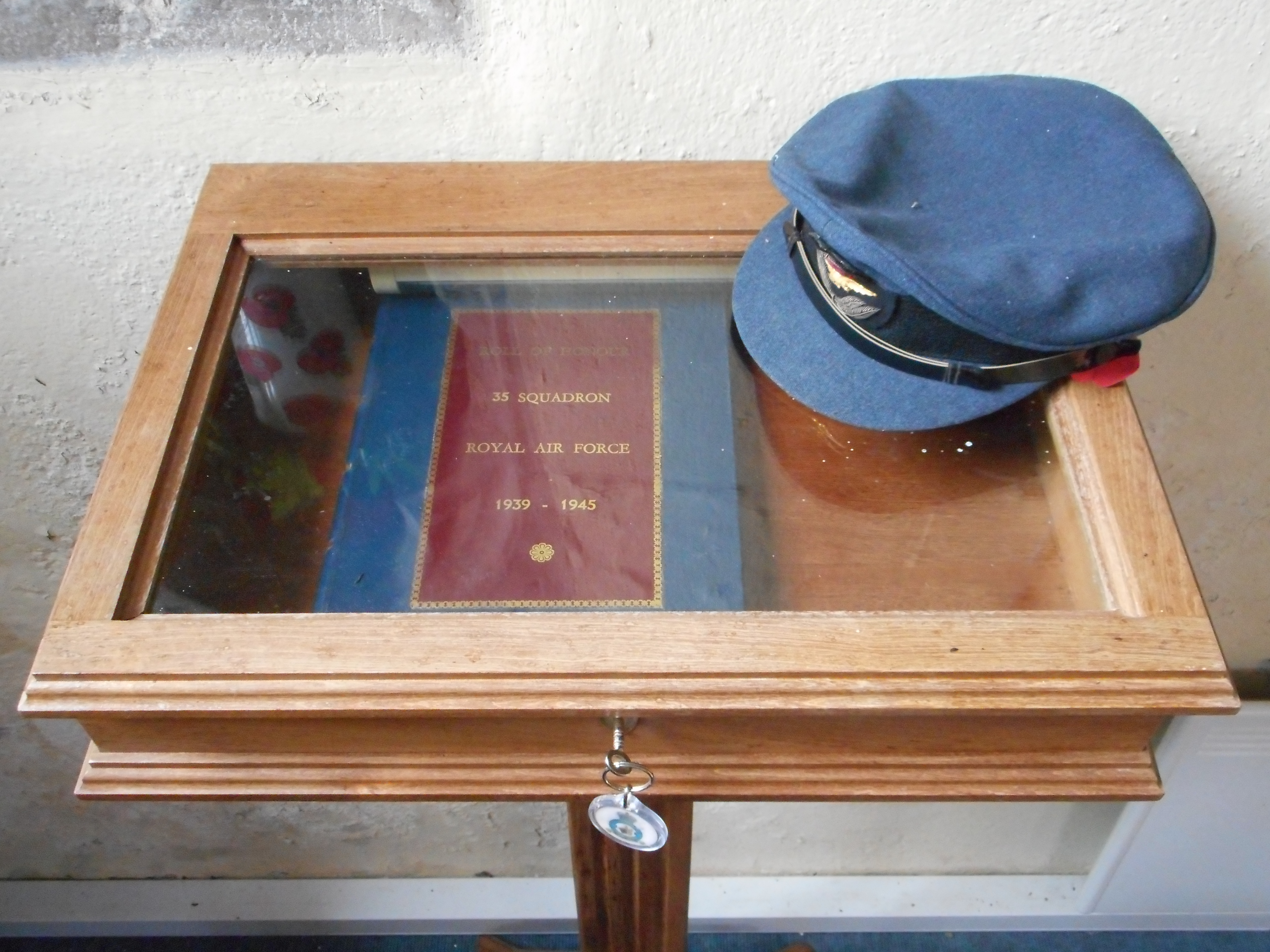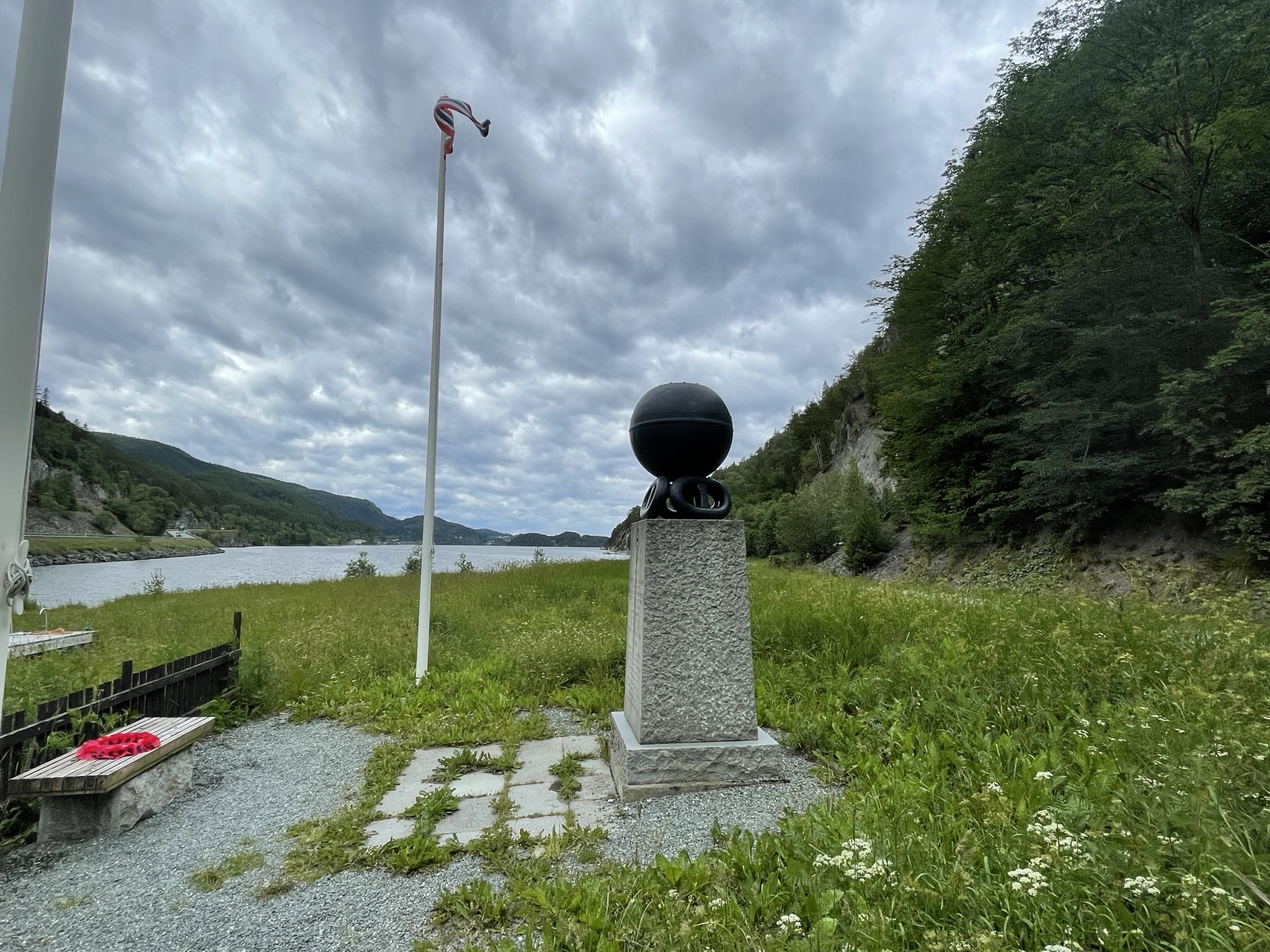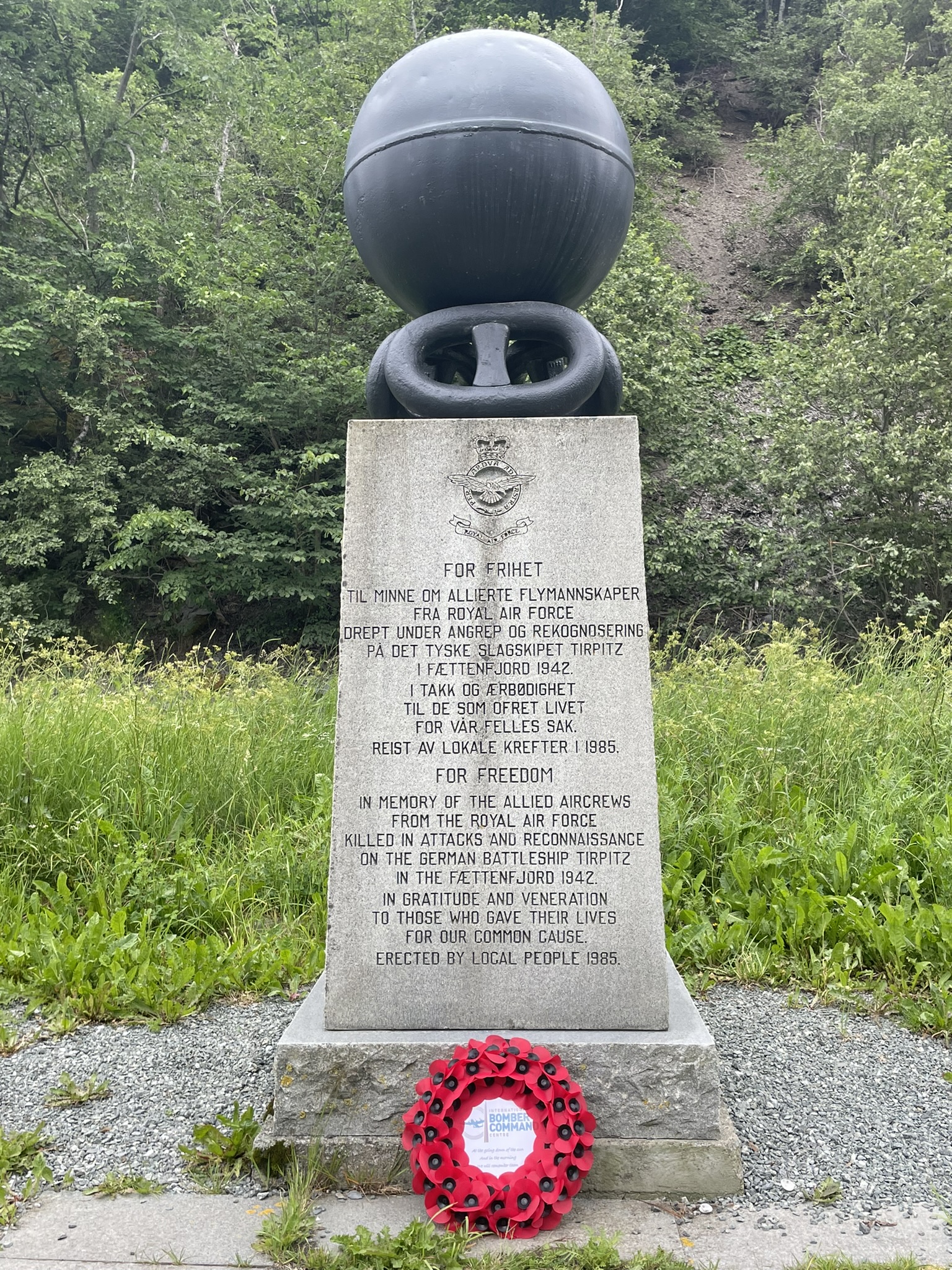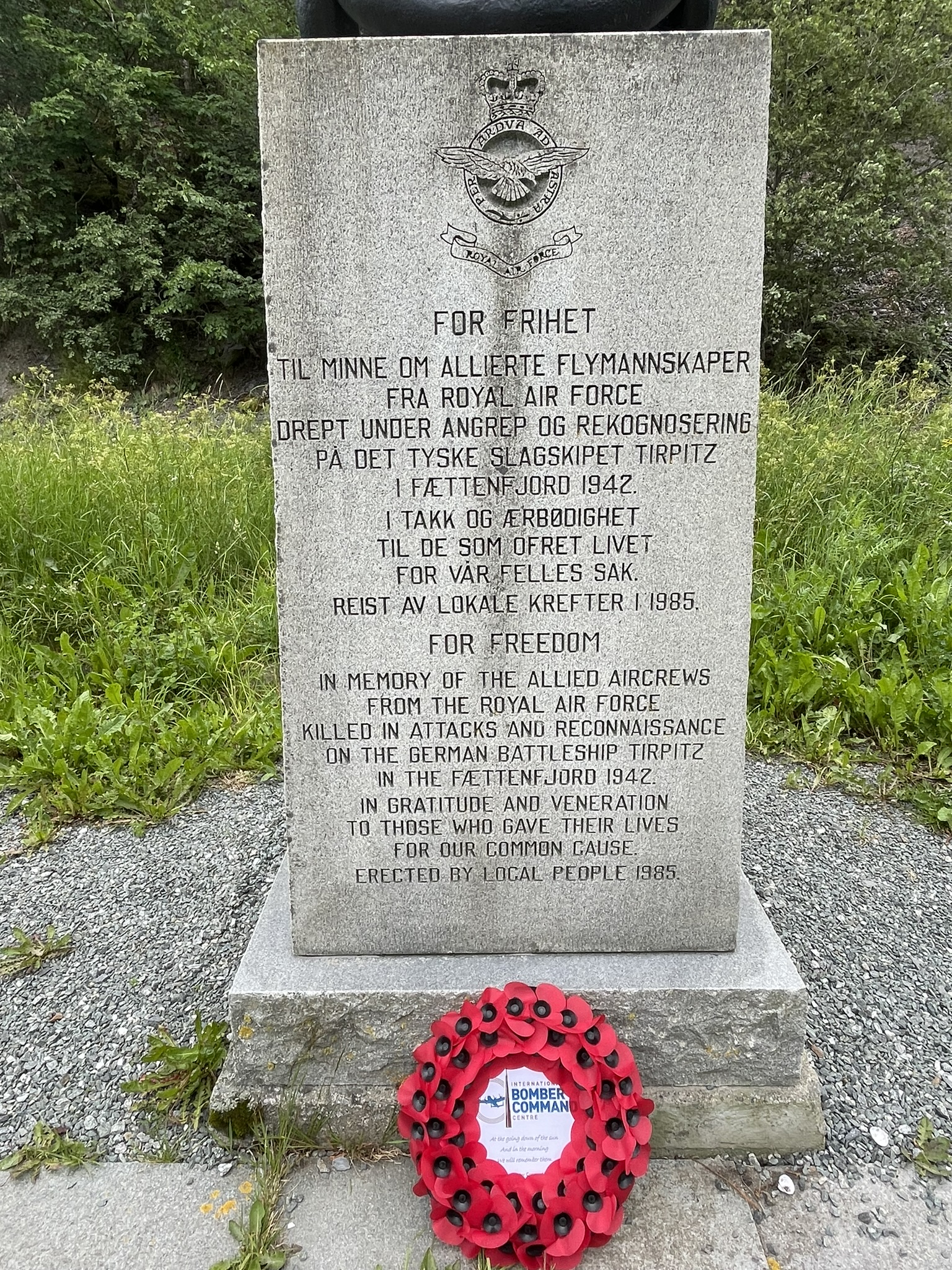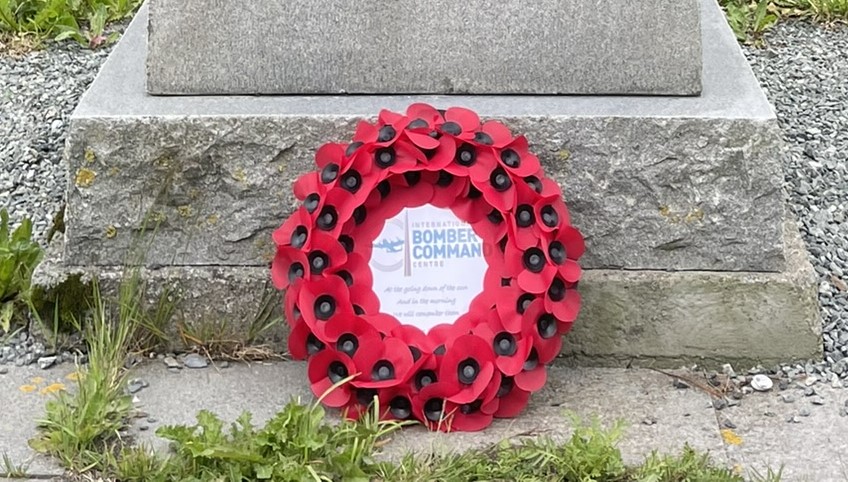Sale, Douglas Julian
Personal Information
| Rank | S/L |
| Forename(s) | Douglas Julian |
| Surname | Sale |
| Gender | M |
| Age | 30 |
| Decorations | DSO*, DFC |
| Date of Death | 20-03-1944 |
| Next of Kin | Son of Julian and Editha Sale. |
Aircraft Information
| Aircraft | Handley Page Halifax III |
| Serial Number | HX325 |
| Markings | TL-J |
Memorial Information
| Burial/Memorial Country | France |
| Burial/Memorial Place | Choloy War Cemetery |
| Grave Reference | 1. G. 8. |
| Epitaph | HOW SLEEP THE BRAVE, WHO SINK TO REST BY ALL THEIR COUNTRY'S WISHES BLESS'D! |
IBCC Memorial Information
| Phase | 2 |
| Panel Number | 237 |
Enlistment Information
| Service Number | J/9929 |
| Service | Royal Canadian Air Force |
| Group | 8 |
| Squadron | 35 (Madras Presidency) |
| Squadron Motto | Uno animo agimus (We act with one accord) |
| Trade | Pilot |
| Country of Origin | Canada |
Other Memorials
| Location | Roadside Location, Graveley, Cambridgeshire |
| Country | United Kingdom |
| Memorial Type | Inscribed Memorial Stone |
| Memorial Text | Graveley Airfield 1942-1945 8 Group Bomber Command 35 Squadron Pathfinder Force 692 Squadron Light Night Striking Force R.A.F. To commemorate this airfield in honour of those who served the nation aircrew, groundstaff & WAFF of United Kingdom Dominions, C |
| Location | All Saints Church, Offord Cluny, Cambridgeshire |
| Country | United Kingdom |
| Memorial Type | Stained Glass Window, Sqn Badge & Roll of Honour |
| Memorial Text | Remember before God all those airmen and airwomen 3who served with 35 Squadron R.A.F. Graveley 1939-1945 |
| Location | Roadside location (off E6), F�ttenfjord, near �senfjord, Tr�ndelag Fylke |
| Country | Norway |
| Memorial Type | Inscribed memorial stone atopped with inert aerial sea mine and Tirpitz anchor chain link |
| Memorial Text |
For Frihet Til minne om Allierte Flymannskaper fra RAF drept under angrep pa det tyske slagskipet Tirpitz i F�ttenfjord 1942
Translation "For freedom In memory of the Allied Aircrews from the RAF who died in attacks on the German Battleship Tirpitz in the F�ttenfjord 1942 " |
Miscellaneous Information
| A highly celebrated pilot with many a tale of courage, including escaping from captivity. |
| DSO Citation, London Gazette, 5 October 1943: "In air operations, this officer has displayed great skill and achieved many successes against the enemy's most heavily defended objectives. His unconquerable spirit of determination, great gallantry and fortitude have set an example beyond praise". |
| Bar to DSO Citation, London Gazette, 1 February 1944: "One night in December, 1943, this officer was the pilot of an aircraft detailed to attack a target in Germany. Although heavy cloud prevailed over the target, Squadron Leader Sale displayed great persistence and made 5 runs over the area before releasing his bombs. The return flight was safely accomplished but, whilst over base at a height of 1,500 feet, some stores exploded and flames burst out near the rear turret and the under side of one of the wings. The aircraft quickly became filled with smoke and fumes and the fire spread rapidly. The danger of the tanks exploding was soon apparent. Coolly, Squadron Leader Sale turned away from the airfield, regained height and ordered his crew to leave by parachute. By this time, he could hardly see the instruments as the smoke in the cockpit was so dense. As he was just about to leave the aircraft himself Squadron Leader Sale saw, standing beside him, a member of the crew who had been unable to leave as his parachute was badly damaged and unusable. Squadron Leader Sale therefore decided to attempt to land the burning aircraft and succeeded in so doing. The floor of the fuselage, some equipment and some stores were blazing as he and his comrade got clear. When they were a bare 200 yards away the aircraft exploded. In circumstances of great danger, Squadron Leader Sale displayed great courage and determination, setting an example of the highest order". |
| He had previously evaded captured after surviving the crash of 35 Squadron aircraft DT801 in the Netherlands on 28 June 1944 during an attack on Duisburg. He was repatriated to UK on 11 August 1944 via Belgium, France, Andover, Spain and Gibraltar. File WO 208/3314/1352 refers - see https://discovery.nationalarchives.gov.uk/details/r/C14083620. See also books We Act with One Accord (pp122-123) and Shot Down on the Run (pp97-103) |
| Ironically he died in captivity as a result of this operation. He was badly injured during the attack and was admitted to hospital where he died a month later. |
Commonwealth War Graves Commission
The National Archives
| Record of Events (Operational Record Book) AIR 27/381/4 |
| Summary of Events (Operational Record Book) AIR 27/381/3 |
Fellow Servicemen
Please note that this list gives all the losses aboard the quoted aircraft and occasionally these may have occurred on an earlier date when the aircraft was not itself lost. Please check the dates of death carefully.
Last Operation Information
| Start Date | 19-02-1944 |
| End Date | 20-02-1944 |
| Takeoff Station | Graveley |
| Day/Night Raid | Night (22% moon) |
| Operation | Leipzig. 823 aircraft, 78 losses (9.5%). Excluding early returners, the Halifax loss rate was 14.9%. As a result, Halifax Mks II and V were permanently withdrawn from service over Germany. The Kiel mine laying diversion was successful in drawing off fighters, but the German controllers only sent half of the available aircraft. As soon as the bomber stream crossed the Dutch coast they were confronted by the remaining half of the fighters and, moreover, the ones sent to Kiel were returned to join the fray. As a consequence, the fighters steadily picked off bombers all the way to this distant target. The winds were strongly than had been predicted and many bombers arrived early and had to orbit the target awaiting the Pathfinders, further increasing the likelihood of being picked off, either by flak or fighters. Leipzig was cloud covered and sky-marking had to be used. Early bombing appeared to be concentrated but later bombing less so. There was no local report nor a reconnaissance flight the following day. An American raid the following day then made it impossible to judge the effectiveness of the raid. |
| Reason for Loss | Shot down by a Ju 88 at 20000' on outbound leg. Partially abandoned and crashed NNE of Lachendorf, Germany |
